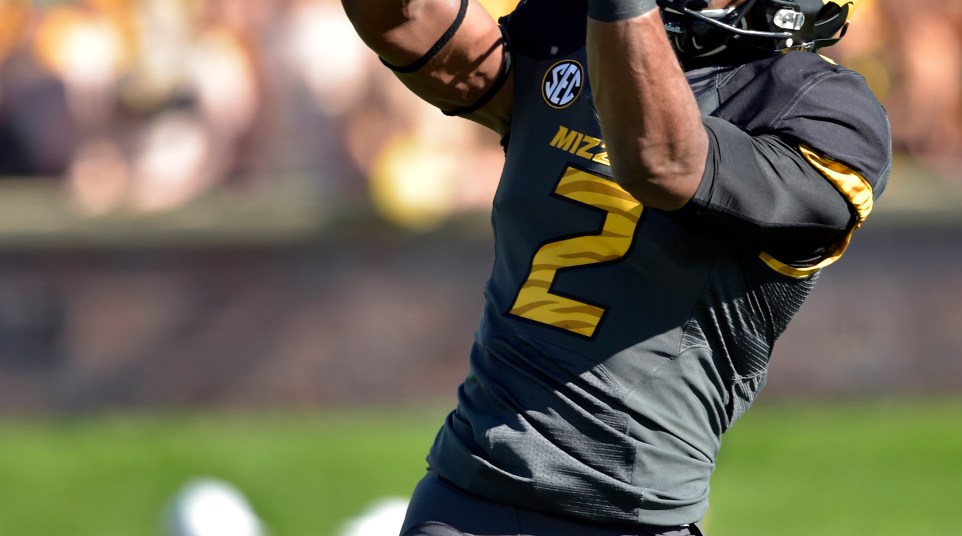Taking Stock: Inexperienced Missouri WRs learning fast
A year ago, analysts pegged Missouri for a so-so season in response to the team losing several key players from 2013, including lengthy receivers Marcus Lucas, L’Damian Washington and Dorial Green-Beckham.
Those three all stood 6-foot-4 or taller, spread the field for Missouri’s scrambling QBs and almost never came out of the game. Their absence created a hole for 2014, but it was filled admirably by Bud Sasser, a senior receiver who was usually the fourth wideout in 2013.
But Sasser is gone, as are 2014 starters Jimmie Hunt and Darius White. That leaves just three Missouri receivers who have caught a pass in a game: sophomore Nate Brown (five), senior Wesley Leftwich (three) and redshirt sophomore J’Mon Moore (two).
Tigers fans shouldn’t be comparing the 2014 rebuilding of the receiving corps to this season’s task. Plugging in senior receivers with backup experience (as Sasser, Hunt and White all had) is much easier than promoting inexperienced youth to starting roles. Missouri receivers coach Pat Washington will have his work cut out for him, but at least he has pieces to work with.
Let’s start with Brown. He’s a former four-star recruit and one of the few freshmen that coach Gary Pinkel indicated wouldn’t be redshirted early last season. That turned out to be the case, as Brown played in nine games while gaining 45 receiving yards. He is healthy now in camp after missing most of the spring with a knee sprain.
Brown was a guy who didn’t always look in sync with quarterback Maty Mauk, which is understandable for a true freshman. But the two caught on as the season progressed, with Brown’s best game coming in the Citrus Bowl. The two worked with each other throughout the summer, so it will be interesting to see how quickly Brown can emerge as a No. 1 target.
Leftwich is the “meat and potatoes” of the returning receivers. He started four games last season, mostly in place of an oft-injured White. He has good speed and solid hands, but sometimes ran into coverage trouble, especially further down the field. He’ll likely start as a flanker this season. Best case, he’s a surefire option Mauk can safely throw to six to eight times a game.
That brings us to Moore, the receiver with the most potential but who also poses the biggest question mark. He is currently listed as a backup X receiver, his starting spot lost as a result of an argument with a coach during the summer. Mauk has worked closer with Moore than any other receiver, going so far as to bring him to the quarterback’s hometown of Kenton, Ohio, last summer to work on routes and build chemistry.
If the Tigers are going to have anything more than a subpar passing game, they’ll need Moore to increase his maturity and break out as a scoring threat. Really, they needed him to break out last season when White was injured, but that didn’t happen.
In what should eventually become Moore’s starting spot is DeSean Blair, a 6-foot-3 redshirt freshman who earned the team’s Most Improved Wideout award in the spring. He’s also impressing in the fall, as this video shows:
Other new receivers include redshirt freshman Thomas Richard (6-foot-1, 190 pounds), redshirt freshman Keyon Dilosa (6-3, 200) and redshirt freshman Ray Wingo, a versatile athlete listed as a defensive back last season but who has moved to X receiver on the depth chart.
The receivers should be complemented with multiple tight end sets, something offensive coordinator Josh Henson looked to do last year but found limited success with Sean Culkin (20 receptions, one touchdown). Culkin will be back as the starter, but sophomore Jason Reese may boast more potential as a pass-catching option.
Overall, Missouri’s receiving corps is in good shape for the future. But it takes time to learn routes and adjust to a scrambling quarterback. Missouri may be wise this season, especially early on, to rely on Culkin, Reese and its solid group of running backs before stretching its receiving corps thinner than it already is.

